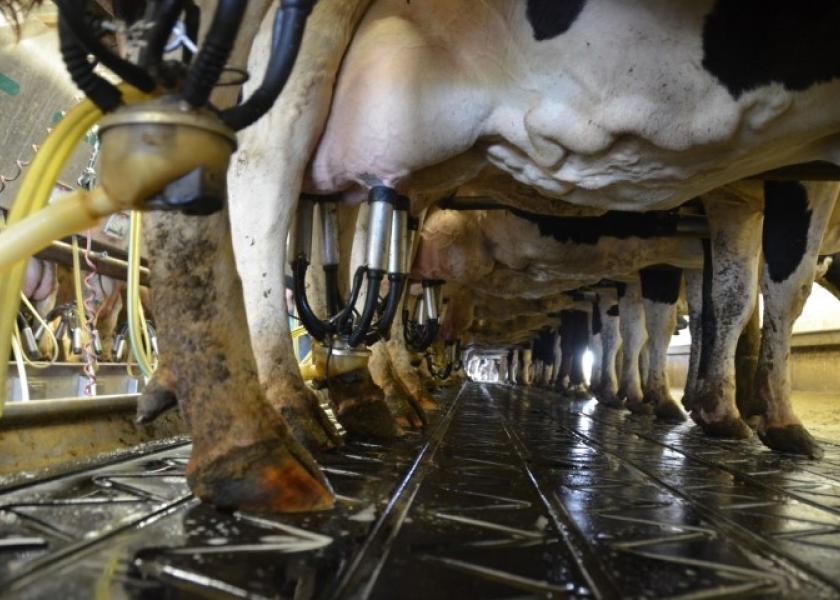Even in Large Herds Individual Cow Somatic Cell Count Is Important

As herds grow larger and sophisticated parlor technology becomes more widespread, there’s a belief that individual cow somatic cell count (SCC) testing isn’t worth the effort. But research involving 22 large herds with nearly 165,000 cows suggests otherwise.
Mark Kirkpatrick, a managing veterinarian with Zoetis, compared performance of cows that freshened with cell counts above and below 200,000 somatic cells per mL at first test.
His conclusion: “A higher SCC at first test is as much a disease condition as clinical mastitis.”
And the costs are multiple:
- Lost milk production
- Greater risk of clinical mastitis
- Lower reproduction
- Higher, faster culling
“Even in the face of no milk quality premiums, it remains in the producer’s best financial interest to manage SCCs,” Kirkpatrick says.
The differences are striking. Cows with cell counts above 200,000 at first test produced 1,583 lb. less milk than herd mates with SCCs below 200,000.
It also stands to reason that cows with high somatic cell counts early in lactation will flare with clinical mastitis more often.
About 8% of cows with cell counts below 200,000 at first test will still have a clinical case of mastitis within the first 60 days in milk. A whopping 25% of cows with SCCs above 200,000 at first test will have clinical mastitis within 60 days of calving.
Across an entire herd, the odds of high SCCs flaring with a clinical case is two and a half to four times more often. And they’ll have those cases about two months sooner than herd mates.
Numerous studies have also shown cows with high cell counts have poorer reproduction. And Kirkpatrick’s research also supports that idea: Cows with high cell counts early in lactation require an additional 17 days to become pregnant.
In addition, cows with high SCCs are also culled sooner and more frequently. In Kirkpatrick’s study, just 2% of cows with cell counts below 200,000 at first test were culled within the first 60 days in milk. But 6.5% cows with cell counts above 200,000 at first test were culled within the first 60 days.
High cell count cows typically leave the herd 98 days earlier than herdmates. That’s even faster than cows with clinical mastitis, which leave the herd 51 days earlier.
Dry Period Management Critical
The place to start managing early lactation SCCs starts with the previous dry period—well before cows calve, says Kirkpatrick.
- Use dry cow therapy to address existing infections.
- Use an internal teat sealant at dry off to prevent new dry period infections.
- Ensure cows have a clean and dry environment throughout the dry period.
- Use core antigen vaccines to aid in the control of clinical signs of E. coli mastitis.
This article was reposted from a 2020 Dairy Herd Management.







